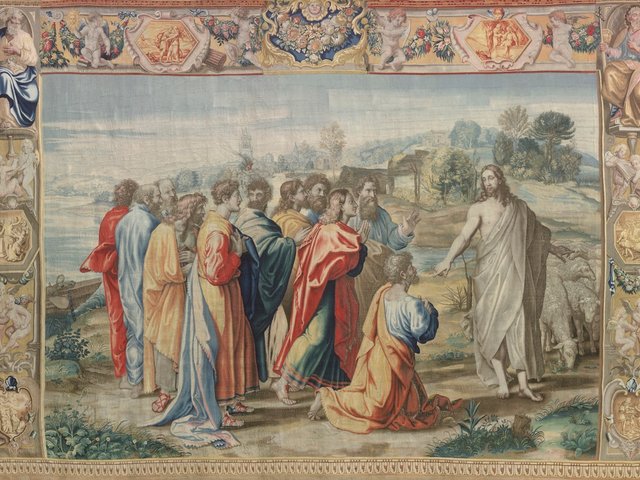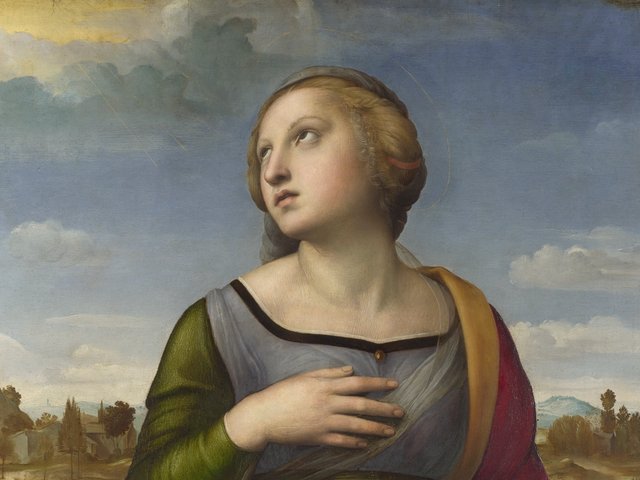Columbus, Ohio
The Columbus Museum of Art is showing one of the essential historical exhibitions of the year, “Dresden in the Ages of Splendour and Enlightenment: eighteenth-century paintings from the Old Masters Picture Gallery”, an unprecedented six-month loan of nearly eighty paintings. Conceived by Harald Marx, director of the Gemaldegalerie, it differs radically in content and focus from the last great loan show from Dresden, which toured San Francisco, Washington and New York in 1978.
"I am always asked to organise ‘masterpieces from Dresden’ type shows,” says Dr Marx, "But I really wanted to do something that both had a definite point and will focus attention on overlooked aspects of our collection. It's curious, but while usually the decorative arts receive less attention than paintings, in Dresden the opposite is true. Eighteenth-century Dresden has always been considered in terms of the development of Meissen porcelain under the Saxon Elector Augustus the Strong and the work of the court goldsmiths Dinglinger and Permoser. Our paintings of the period have been overshadowed by comparison." Dr Marx is keen to emphasise the fact that while Augustus the Strong and his successor Augustus III were tireless in their pursuit of notable paintings of the sixteenth and seventeenth centuries (led by Raphael's "Sistine Madonna", four Correggio altarpieces and Fetti's "Parables"), they were equally enthusiastic about contemporary art. "In 1753, the Dresden Gallery was one of the first in Europe to be open to the public as a kind of ‘school’ to form the tastes of the Saxon people," says Dr Marx. "This was a half century before the establishment of the Musée Napoleon at the Louvre."
In addition to well-known artists such as Watteau, Tiepolo, Lancret and Subleyras (represented by the spectacular "Christ in the House of Simon"), the exhibition features artists whose works are barely known outside of Dresden, notably Louis de Silvestre (whose "Angelica & Medoro" was discovered by Dr Marx for $14,000 at Christie's East in New York last October, where it had been catalogued as "Anonymous French School"), the portraitist Anton Graff (whose "Self-portrait in advanced age" is a revelation of the show) and Christian Seybold, whose extraordinary "Old woman with green kerchief" was looted from Dresden in 1945 by the occupying Russians and was only recovered when it was sent to Sotheby's London for sale in 1991. Although the exhibition was first shown in Spain, at the Banco del Bilbao in Madrid , it came to Columbus at the instigation of Frank Wobst, the Dresden-born CEO of the Huntington Bank of Columbus who has had a long and deep passion for his native city. As one of the founders of the American Friends of Dresden, Wobst has raised a considerable amount of money to rebuild the Frauenkirche and the Dresden Synagogue (destroyed in World War II). Soon after the unification of Germany in 1989, Mr Wobst proposed to the mayor of Dresden that Columbus and Dresden join as "sister cities" with educational and cultural exchanges. "As part of our exchanges Irvin Lippman, the director of the Columbus Museum, and I got to know Dr. Marx, who was very enthusiastic about the proposed exhibition and we took it from there."
o “Dresden in the Ages of Splendour and Enlightenment: eighteenth-century paintings from the Old Masters Picture Gallery” at the Columbus Museum of Art until 24 October.



